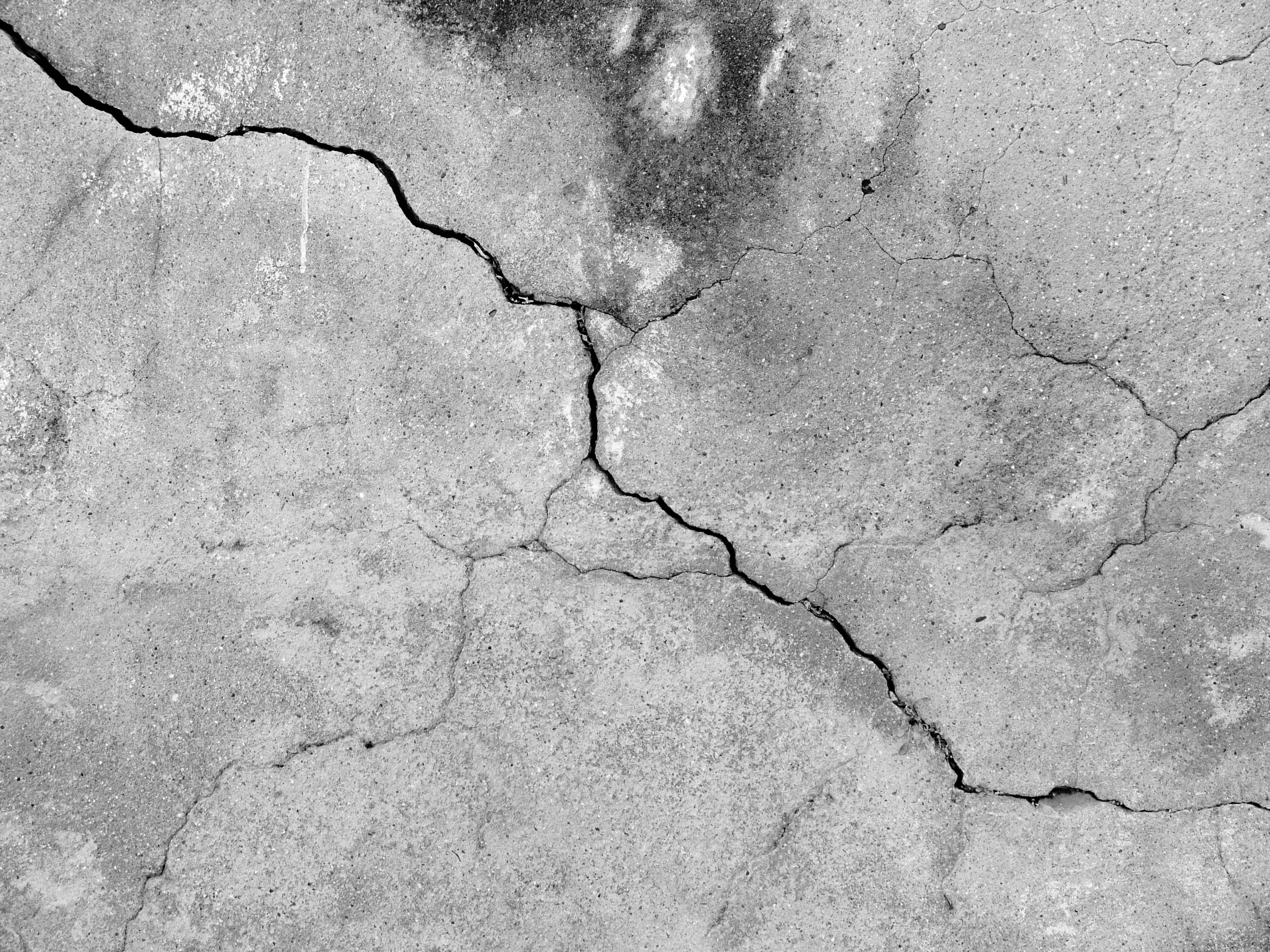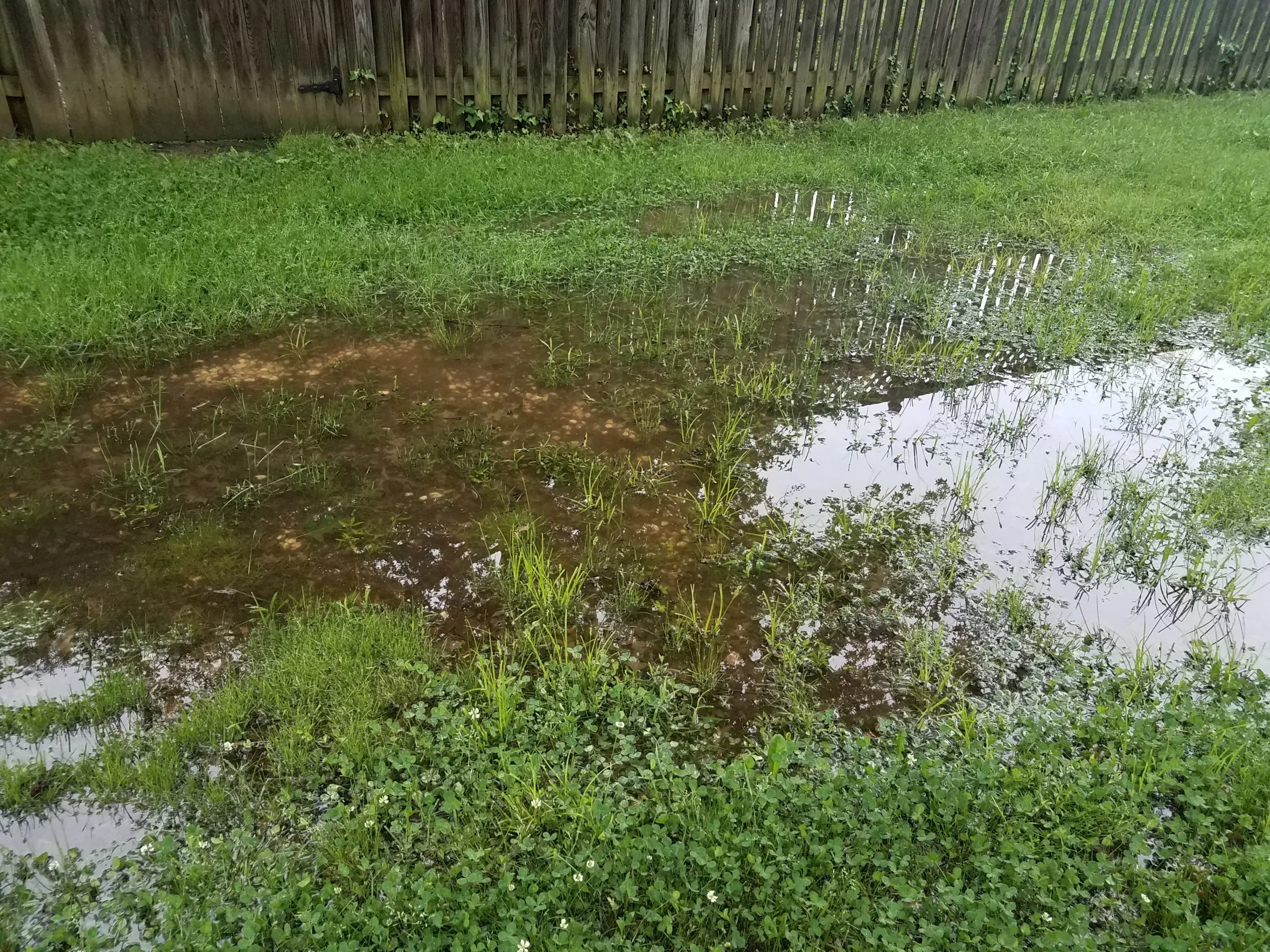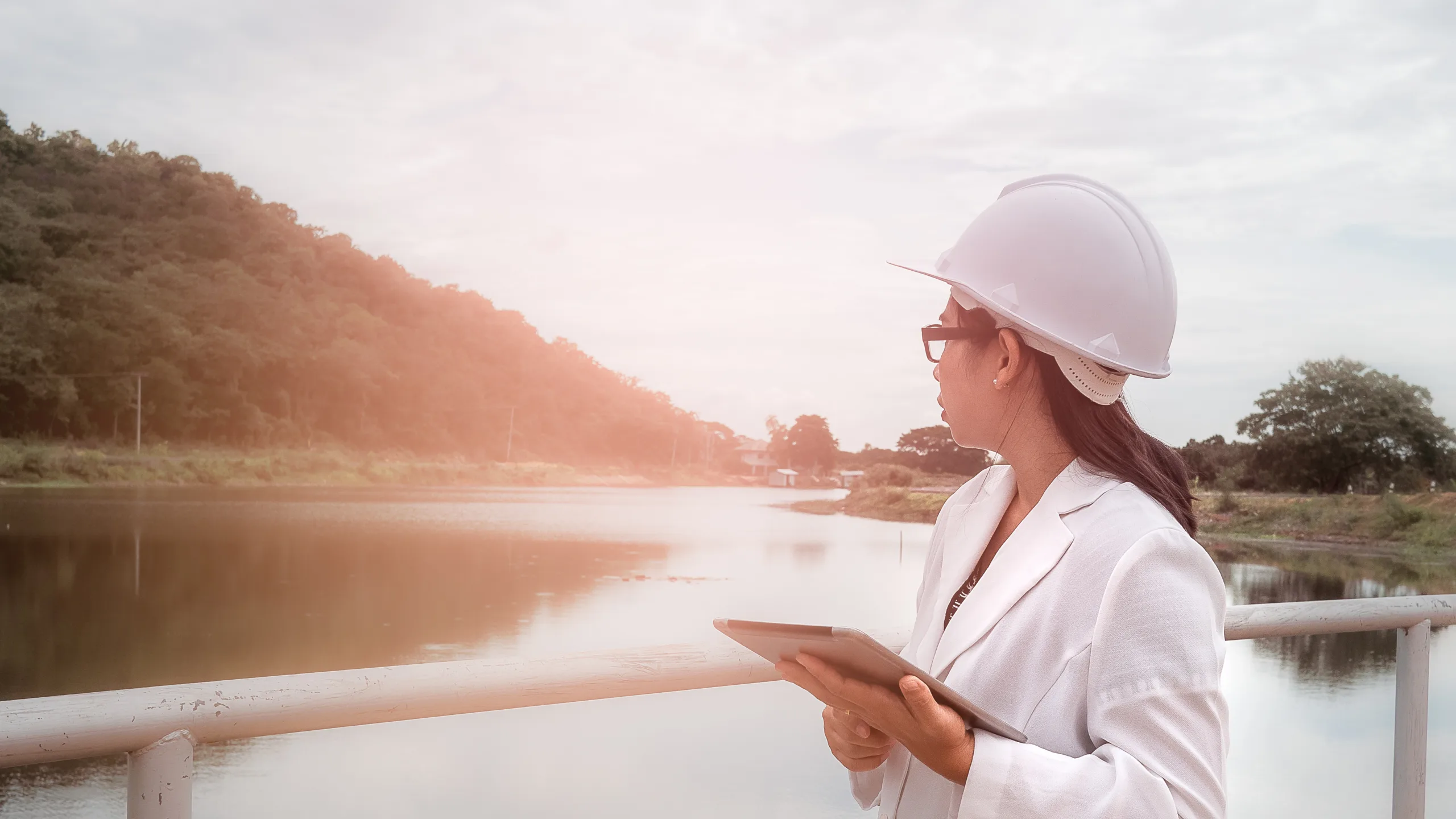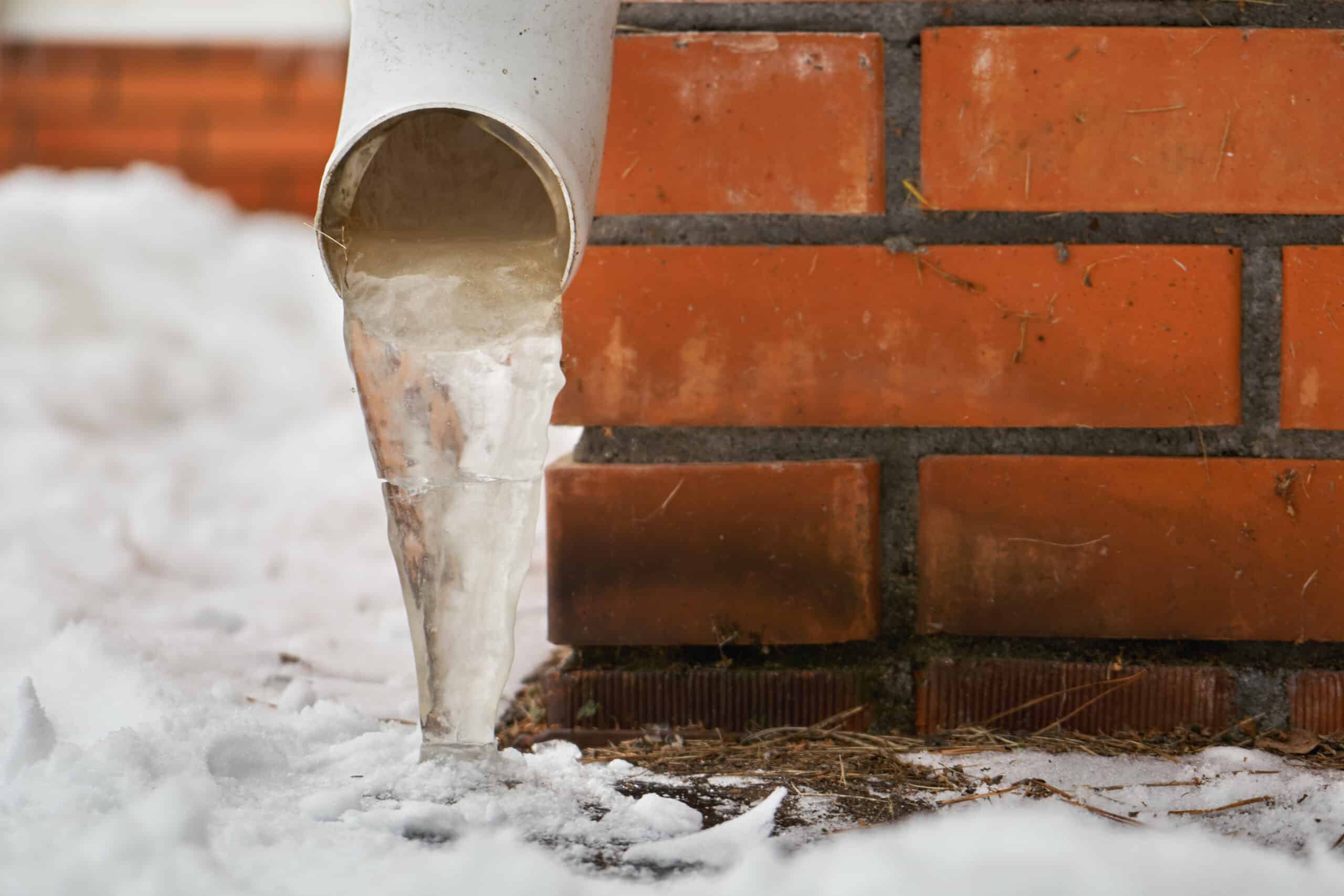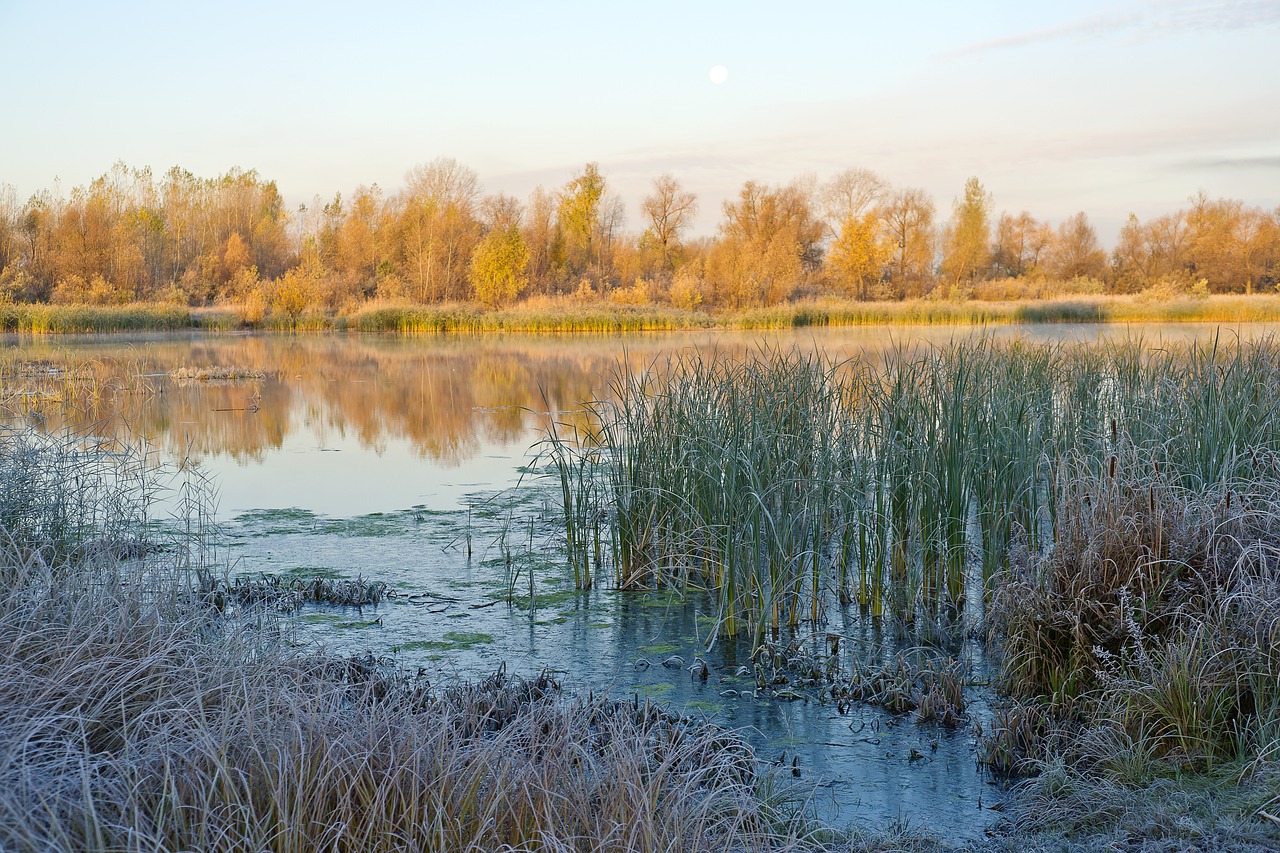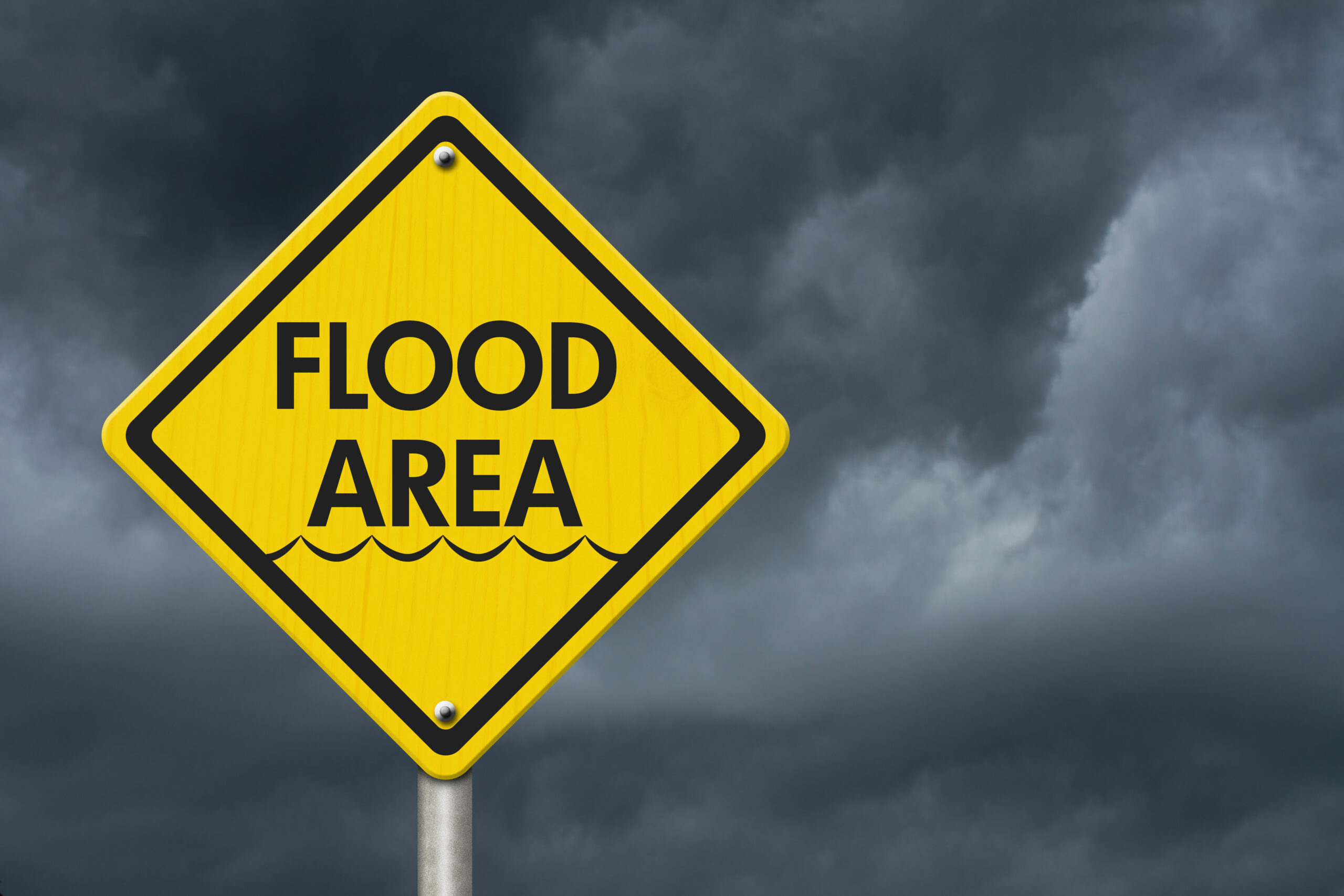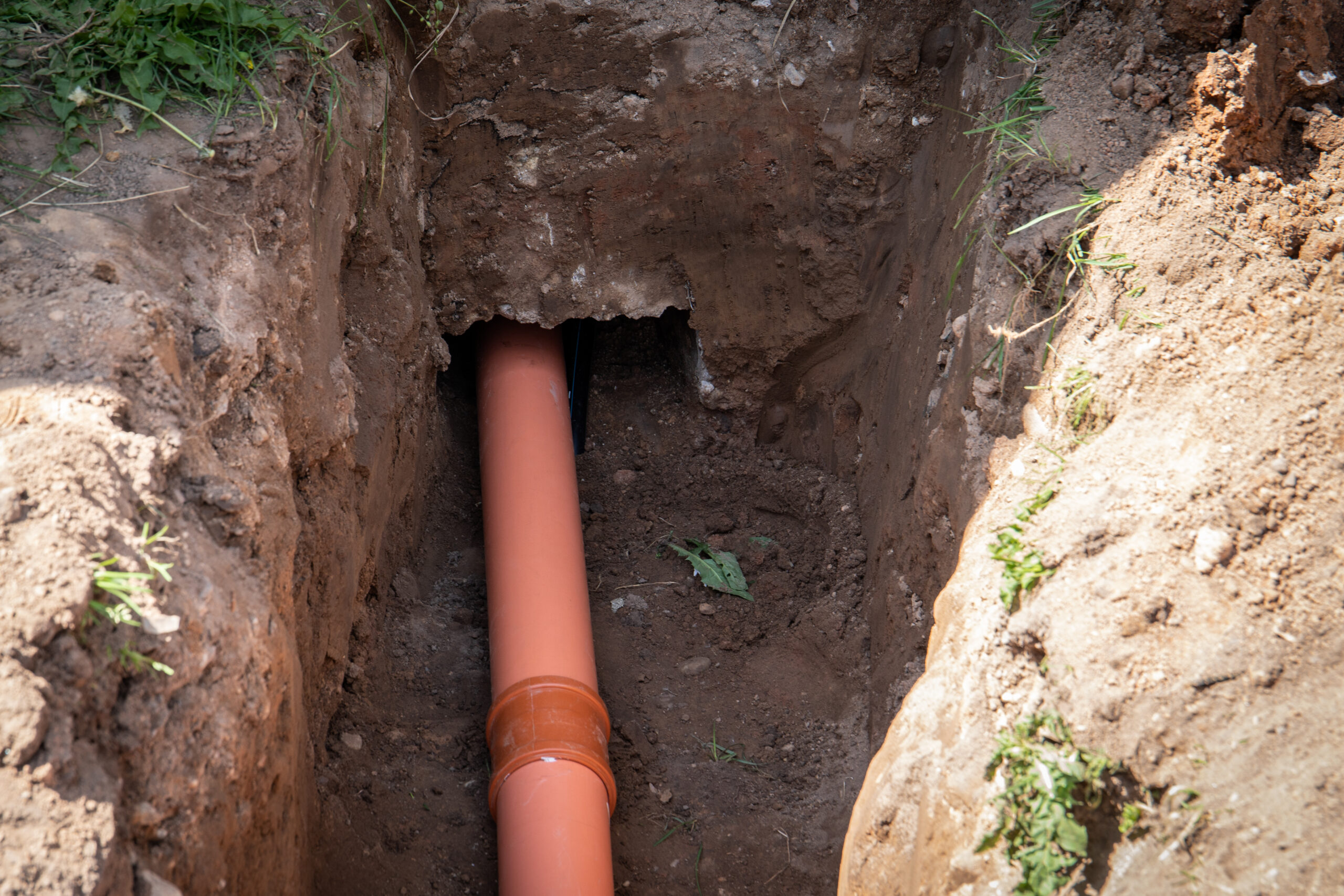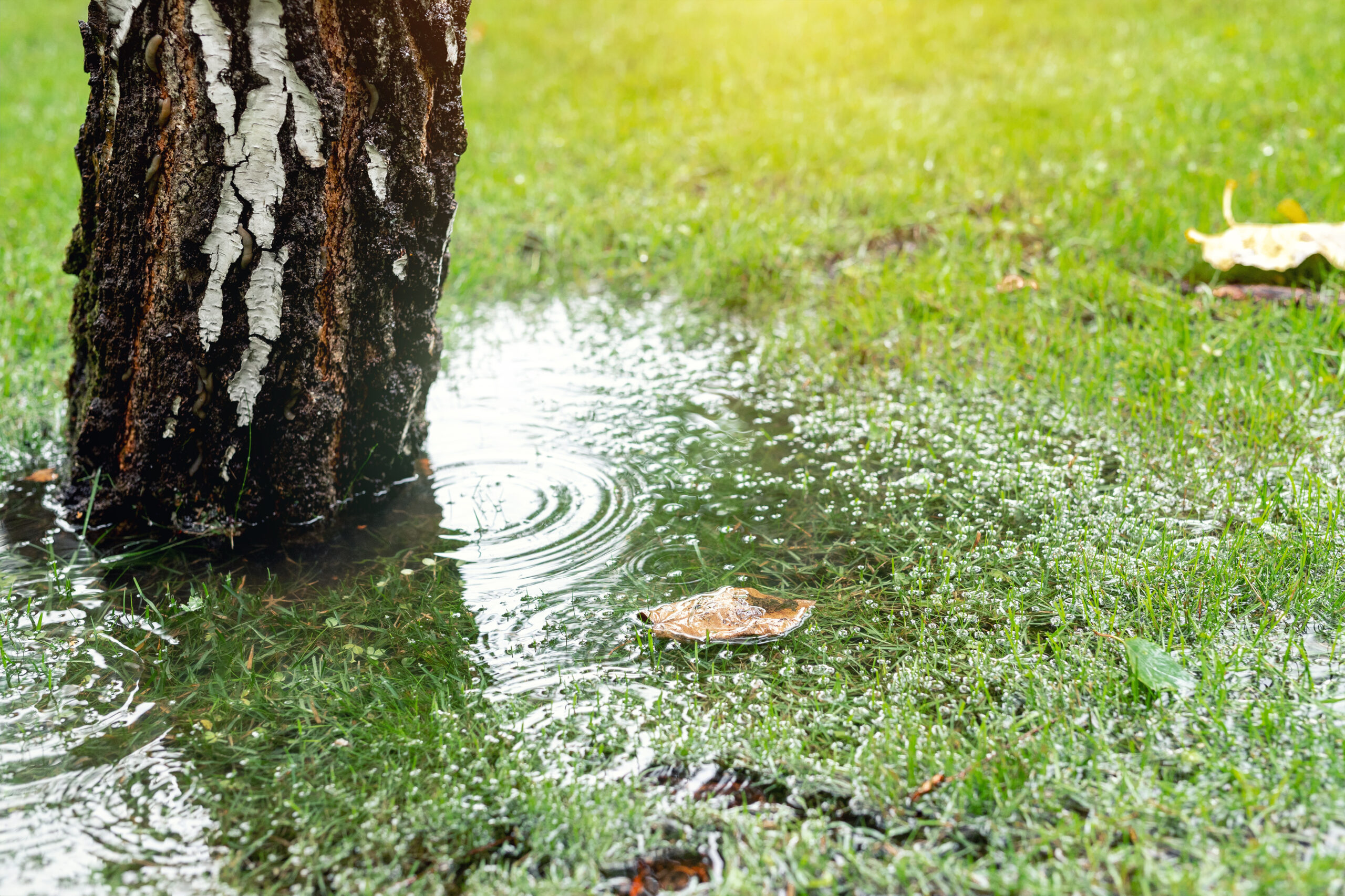The Impact of Poor Drainage on Your Building's Foundation
One of the most effective things you can do to protect your building’s foundation is to manage the way water is draining on the property. The reality is that the effects of poor drainage can cause structural damage to a structure’s foundation, which compromises the integrity of the whole building. Not only can these issues affect residential homes, but drainage is also important for commercial properties.
The good news is that an effective drainage system is a proactive way to avoid a variety of issues. It’s a good investment to identify and address any drainage issues that you are currently experiencing. Prompt attention to these problems with drainage services in New Jersey will help you avoid costly repairs in the future.
How Poor Drainage Causes Foundation Problems
If you have poor drainage, then it means that excess water can start to accumulate around the foundation. As the water content increases, then it can change the soil – actually weakening the soil around the foundation. Then, the soil starts to shift and uneven settling happens.
There are several ways the foundation can be damaged when this happens:
- Hydrostatic Pressure: Water around the outside of the foundation can start pushing against the foundation walls.
- Erosion: Water can cause the soil to wash away from the foundation, which means there is less support to hold the foundation in place.
- Expansion and Contraction: When the water content in the soil is constantly changing, it can cause the soil to swell and shrink. This soil expansion and contraction can result in foundation cracks.
Every property owner needs to understand the importance of good drainage. If you have drainage issues, then there are serious long-term consequences that can occur – potentially threatening the structural integrity. It’s important to call for drainage services in New Jersey as soon as possible.
What Poor Drainage Systems Can Do to Your Building’s Foundation
Here are a few ways that your foundation walls might be damaged due to a poor drainage system.
Water Damage
The foundation materials are weakened when there is prolonged exposure to moisture. You might notice that water starts seeping into the crawl spaces or basement, which could be an indication of structural damage. This water damage and the related drainage issue also increase the potential for wood rot and/or mold growth in the area.
You never want to have standing water (also known as pooling water) around the foundation, because it means that the water will eventually find its way into the building.
Mold
Mold spores thrive in environments that are damp and poorly ventilated, such as crawl spaces and basements. If drainage issues are happening that keep the area damp, then mold can start growing in just a few days.
Mold is more than an inconvenience – it can result in serious health consequences. So, it’s critical to not only fix the drainage issues as soon as possible, but also clean up the mold right away. The reality is that effective mold remediation is difficult and expensive, so it’s best to invest in a good drainage system from the beginning to prevent these issues. Call for drainage services in New Jersey for assistance.
Cracks
When the moisture content around the foundation is changing and the soil starts to shift, then the foundation also starts shifting and settling. A little settling is normal and planned for in the building design. However, excess soil moisture causes more shifting than expected, and it will start leading to cracks in the floors and walls of the foundation.
In the beginning, the cracks are small and might seem inconsequential. But, over time, and with continued drainage problems, the cracks will worsen. Eventually, these cracks are severe enough that they compromise the stability of the building.
Additional problems can start to occur when the cracks get big enough to leak water into the building – which exacerbates the damage both inside and out.
Soil Erosion or Expansion
When the foundation was poured, the excavation team was proactive about forming the soil to offer extra support for the foundation. But if there is poor drainage, then the extra water can wash away the soil that supports the foundation. This issue results in voids, causing instability overall.
Also, certain soil types can expand when it’s wet, which puts pressure on the foundation. For example, if your home sits upon soil that contains clay, then this is an issue that you need to prevent.
Any time the soil changes, it can cause the foundation to heave and crack, which can eventually lead to a collapse.
Protect Your Foundation With the Right Drainage System
Keep in mind that foundation repair is very expensive. Once the damage is done, then you will have a costly project that must be completed to save your home. Don’t wait! A proactive approach with drainage services in New Jersey is much more affordable, and will save you a lot of stress in the future.
With the right drainage system, it’s possible to avoid this type of foundation damage. For more information about these services, contact our experienced team at Mikula Contracting. We are here to help with both residential and commercial drainage systems.
April Showers Bring May Flowers - But Did Your Drainage System Work Effectively?
When the weather patterns are changing, it’s a great opportunity to evaluate how well your drainage systems are working. If you have been noticing that your residential or commercial property is having drainage issues, then it might be time to reach out to a New Jersey drainage contractor for assistance.
Our team at Mikula is here to help. We address a variety of drainage issues, including problems with the exterior sump pump and drain lines, surface runoff, and more. Our goal is to ensure that you have a proper drainage system to avoid water damage to your building and property.
How Do Drainage Systems Work?
Drainage systems are unique in that they don’t depend on pressure to move water. If you have a good drainage system, then it means that the water flows naturally in the right direction because gravity pulls the waste along the intended path: down a sewer line and eventually to a sewage treatment facility (or septic tank).
So, all of the drain lines are designed with a natural slope. This process happens during the excavation, landscaping, and plumbing installation to assist the water in moving freely. The angle of the ground and piping plays a crucial role: if there is a problem with the angle and it isn’t sloped enough, then it can result in drainage issues. Eventually, these problems can result in serious and expensive repairs because the drainage system is not successfully removing excess water.
Not only does a drainage system manage the water waste coming from the building, but it’s just as important to manage the water outside. Whether it is raining and water is in the gutter systems, or water is moving through a sprinkler system, it’s important that the water is able to move to the desired location. An experienced New Jersey drainage contractor assists with this process by designing a system that works optimally.
The Importance of a Well-Maintained Drainage System
You need to make sure that your drainage system is working optimally at all times, and this happens with regular cleaning and maintenance. For example, sometimes organic matter can get caught in the drainage system, causing it to back up and flood.
Clearing the lines and maintaining effective drainage is critical to reduce the risk of water damage and other consequences. Talk to any New Jersey drainage contractor and they will also tell you that proper drainage is important to avoid the risk of stinky odors by minimizing debris and mold that can get caught in the system.
Four Signs Your Drainage System May Not Be Working Effectively
How can you tell when it is time to call a New Jersey drainage contractor because your drainage system isn’t working effectively? Here are a few signs to watch for:
- Draining Water Moves Slowly: Watch the speed at which water is draining from your property. Not only should you be looking for water outside of your home or commercial building, but also consider the water that is draining in the sinks or shower. If there is a blockage anywhere in the system, then it can make it harder for water to flow out of the toilet, sinks, and more.
- Flooding: Flooding is an obvious sign that you are having water and drainage issues. Flooding is more than a mess and an inconvenience: it is an indication that there is something wrong with your system and you need to call a New Jersey drainage contractor. You might have broken pipes that need to be fixed or a blockage that needs to be cleared.
- Stinky Smells: You might smell something funny and think that it is coming from the waste bin or a mess that your pet left somewhere in the house. But don’t overlook the fact that drainage problems can also be a contributor to bad smells. You can’t cover up the smells forever, so you might need to call a drainage expert for assistance. Keep in mind that bad smells can often be the first indication of a problem – even before you see any visual signs.
- Unusual Noises: As the water is draining through the pipes, are you starting to hear unusual noises? These strange sounds could be an indication of drainage problems. For example, gurgling could indicate that air is trapped in the pipes, which could be a sign of a blockage.
Finding the Right Exterior Drainage Solution for You
One essential step to protecting your foundation and landscaping is to ensure that you are managing water runoff properly. A simple and effective solution is to use seepage pits, also known as dry wells. This method is a great option if the area already has soil that allows for natural draining, because the seepage pit helps to disperse excess water.
Also, check the gutters and downspouts to make sure that the connections are secure and sealed. This system keeps the rainwater moving away from your home to minimize the risk of water damage. A good gutter system prevents water from pooling around the foundation.
Since different types of drainage systems are available, the best solution is to talk to an experienced team for personalized results. We’ll consider your soil type, the local climate, and your property’s layout to provide recommendations that will work in all weather conditions. Investing in these exterior drainage systems is an essential step to protect your home for many years to come.
Receive a Quote From a Qualified New Jersey Drainage Contractor
When you need assistance, then it’s time to call the best New Jersey drainage contractor: Mikula Contracting. We are just a phone call away and ready to help with your residential or commercial yard project. Reach out to learn more about available services.
Four Signs You May Need a New Drainage System
If you don’t have a good drainage system in place, then water damage can cause severe and costly damage to your home. The best investment you can make is talking to a New Jersey drainage contractor for assistance to avoid these issues before your home requires repairs.
There are a few telltale signs that reveal your drainage issues and indicate whether you need a new drainage system. Here are the four most important things you should be watching for around your home.
1. Erosion or Soil Movement
One of the biggest warning signs that indicates a problem with water drainage on your property occurs when you can see that the soil is moving or eroding away from the foundation of your property. An effective drainage system manages the water flow throughout the yard, which keeps the soil in place.
Signs of erosion that you might notice are indents in the ground, exposed tree roots, mulch that is washing away, or shifting soil.
2. Standing Water
Standing water is a sign that you need to call a New Jersey drainage contractor. Pay attention to your yard after a rainstorm and see where the water sticks around for a while. Make a note of the places where you notice water pooling, then share these details with your drainage contractor. If you notice water infiltrating your home or you are not seeing existing systems work that could be a sign that it is clogged, broken, or overwhelmed and you should let your drainage contractor know.
While it’s normal for water to stick around for a bit after a storm, a good drainage system will move the excess water out of the way so the ground can dry out in a reasonable time. Standing water isn’t only a sign of drainage problems, but it could eventually lead to other expensive complications such as basement flooding because the water seeps into the foundation instead of moving away from the home.
Additionally, standing water is a magnet for mosquitoes and other pests. So, if you notice a pest infestation around your home or in the yard, then consider calling a New Jersey drainage contractor to see if drainage issues are contributing to the problem.
Bugs and rodents are looking for good living conditions with food and water sources. The puddling water and nearby food sources provide the perfect environment where these pests will thrive. These pests love sewage and wastewater. So, correcting the drainage issues can also help with pest control efforts at the same time.
3. Soggy Lawn
It feels nice to walk barefoot across the lawn, especially in the hottest summer months. But do you notice that the lawn feels wet below your feet? Or maybe you sit down on the lawn and feel the water seeping into your pants.
A soggy lawn is an indication that you could benefit from the services of a New Jersey drainage contractor. Your lawn needs water to grow. But it shouldn’t retain the water indefinitely.
Also, consider talking to a New Jersey drainage contractor before putting in the lawn. The contractor can evaluate any potential drainage issue problems that need to be addressed, giving you the opportunity to implement a drainage solution proactively.
4. Foundation Issues
Problems with the foundation can be an obvious sign of drainage issues. Often, an inspection of the foundation can be fast and easy to identify whether you have any drainage issues that need to be addressed.
Your New Jersey drainage contractor will look for things such as water stains on the concrete or any signs of flooding inside the home. For example, if you are considering buying a home and you see water stains inside, then it could be an indication that drainage problems and flooding have happened in the past.
If you notice cracks in the foundation, then it’s a sign that you need to call for drainage services and soil testing immediately. The faster you fix these issues, the easier it is to avoid even bigger and more expensive complications in the future. Invest in your home now so that you can avoid the headache of drainage problems and structural issues in the future.
Get an Estimate from a New Jersey Drainage Contractor
In addition to checking for foundation issues, a good New Jersey drainage contractor will also look at other signs of drainage problems – such as foul odors, check the sewer line nearby, and make sure that everything is working properly.
Remember: fixing or updating your drainage systems can be a great investment to help you avoid more serious water issues later on. You’ve invested a lot of time and money into your home, and it’s important to be proactive about repairs and maintenance over the years.
If you have a damaged drainage system or you need help with improving drainage around the foundation of your home, then Mikula is just a phone call away. Contact us to learn more about available services and see how we can help. We offer both residential and commercial drainage services.
How Does Water Management Differ in Urban vs. Rural Areas?
Water management is important in all environments, including both rural and urban areas. If you need assistance with preventive New Jersey drainage services or stopping a recurring problem, then our team is here to help.
While there are similarities between the services for both urban and rural New Jersey drainage services, the specific strategies can vary depending on the unique needs of each site. There are ongoing concerns about the impact of water management and pollution concerns, which is why regulations are being implemented on both local and federal levels.
As you are planning a strategy for water management, it’s essential to consider these regulations as well as your unique on-site factors. It makes sense that there will be different drainage solutions for a rural property compared to the strategies used in an urban setting where the environment is vastly different.
Infrastructure Complexity
One challenge with urban stormwater is that the infrastructure in the area is complex. Not only will the movement of the water impact your property and building, but you also need to consider how these strategies will impact your neighbors, as well.
Additionally, pollution management is a critical factor to consider because urban water often picks up contaminants from different chemicals and products that are present on the surface of the concrete, asphalt, and in the sewage systems. Urban areas are carefully designed to manage the runoff, but a proactive approach to New Jersey drainage services is necessary to prevent pollution problems now and in the future.
On the other hand, rural areas don’t have these same complexity issues. It’s often a simpler process to install a straightforward stormwater drainage system in an open space. Since the drinking water is often coming from a local source, such as a well, these factors need to be included in the plan. Rural areas often lack the infrastructure found in urban environments.
Population
The size of the population in the local area matters, especially because there is more pollution generated in areas with a high population density. Another population factor is the increased demand for water, not only because of household use but also because of commercial businesses and industrial activities happening in the area.
So, one essential part of New Jersey drainage services is to make sure that there is a reliable and continuous source of water so the ongoing demand is met. In comparison, rural areas have a comparatively lower demand, with most water being used for agricultural irritation and domestic purposes.
Policy and Governance
In urban areas, water management is usually taken care of by utility and sanitation services. Municipalities are in place to manage these issues, including specific responsibilities, frameworks, and strategies for managing the water in the entire area. If water needs to be managed, then it’s necessary for homeowners or business owners to hire New Jersey drainage services that comply with the local requirements. Sometimes, the government organization will step in to handle the problem on behalf of the community.
In comparison, water management in rural areas is often decentralized, which means it’s the responsibility of each property owner to take care of their own drainage needs. It’s common for these rural areas to have community-based organizations or water associations that oversee the decision-making process for water systems that affect everyone in the area.
Water Sources
Where is the water coming from? What is the quality of the water coming from these sources? The availability and use of this water matter and should be considered in the planning process. You need to know the source of the water, how it will reach the desired location, and any practices that must be implemented to ensure the safety of the water and prevent potential issues.
Also, the way the water is running through urban areas can impact pollution levels downstream. It’s common for urban runoff to contain high levels of organic matter and pollutants, which need to be managed before the water reaches the desired location.
Amount of Open Space
Different drainage systems can be used depending on the amount of space that is open and available. For example, in urban areas, the available space is much less compared to rural conditions. So, even though a large drainage system can be easily installed on a rural property, these same solutions aren’t available in big cities due to limited space.
Speak With an Experienced New Jersey Drainage Contractor
Do you need help with New Jersey drainage services? Then it’s time to reach out to our expert team at Mikula Contracting. We offer full-service solutions for everything from residential drainage to commercial drainage, and more.
We invite you to contact us for more information about how we can help with your projects. We’ll discuss your needs and provide a proposal for the necessary work.
Methods and Techniques for Thawing Frozen Drainage Systems
When the weather turns cold, not only is it necessary to heat your home and keep your family warm, but other factors need to be considered – such as preventing the pipes from freezing. With the right drainage services in New Jersey, you can design a system that enables the proper flow of drinking water and wastewater.
But there are still times when the freezing temperatures can cause drainage systems to be blocked. One of the problems is that when the water freezes, it has unique properties that make it expand. As a result, ice within the drainage systems can put unnecessary pressure on the pipes, eventually causing them to break.
So, if your pipes are freezing, then you need to take a proactive approach to thaw them as quickly as possible – and prevent frozen pipes in the future. If you have serious issues or recurring problems with frozen pipes, then it might be time to call in an expert team to help with drainage services in New Jersey.
A Proactive Approach to Ensuring Your Drainage Systems Don’t Freeze
The key to avoiding water issues is by proactively installing drainage systems that are designed for your unique site conditions. Proper installation matters, because it prevents the drainage system from freezing when the temperatures drop. So, instead of waiting to see if the pipes will freeze, a better solution is to work with an experienced contractor who can help with the ideal installation, depth, and pitch that will reduce the likelihood of these problems in the future.
There are different drainage systems you might consider, including storm drainage, subsurface drainage, and surface drainage. The goal is to collect and transport water effectively so it doesn’t freeze and block or damage the drainage system during the coldest months of the year.
First, an experienced contractor will evaluate the site conditions, then they can offer recommendations on the type of drainage and materials that should be used. This process involves a strategy for drainage channels and pipes, with a clear method for where the water will go. Not only does proper depth impact the flow of the water, but the ideal pitch ensures that the runoff is always moving in the direction of the drainage system. Keeping the drainage running is a key factor to reduce the risk of freezing.
The site must first be excavated properly to achieve the desired depth and pitch. Then, pipe placement can be completed. With the right installation, you are creating a permanent, long-term solution that minimizes the risk of water issues in the future.
Additional Ways to Prevent Your Drainage System from Freezing
While there are strategies that you can use to thaw frozen drainage pipes, the best solution is to prevent frozen pipes so there is no need to call for drainage services in New Jersey. Here are a few tips to keep a pipe from freezing:
- Turn up the heat so the ambient temperature in the house is a little warmer
- Let the faucets drip so the water is always running
- Seal holes and cracks around the pipes
- Place electric heating tape on the areas that are prone to freezing.
A little bit of prevention goes a long way to minimize damage and expensive repairs in the future.
Three Methods for Thawing Frozen Drainage Systems
Often, it’s not realistic to wait for the pipe to thaw naturally, because the ongoing winter weather will keep freezing temperatures for weeks or months at a time. So, you might need to intervene with DIY strategies or call for drainage services to thaw the system and ensure that the pipes are flowing correctly.
The first step is to locate the frozen pipe(s). You need to know exactly where the drainage system is frozen so you know where to focus your efforts to thaw the blockage. Typically, the frozen sections are located on an exterior wall because that’s where the pipes are exposed to the freezing temperatures outside. So, start looking there.
Also, don’t underestimate the benefits of bringing in an experienced team to help with drainage services in New Jersey. Not only can a plumbing pro offer support in identifying the location where the pipes are frozen, but they can also assist with effective methods for thawing the frozen drainage system and preventing these issues from happening again in the future.
1. Salt
Did you know that salt lowers the melting point of ice? As a result, you can return ice to liquid even when the conditions are cold enough to otherwise keep ice solid. If you want to thaw the frozen pipe more quickly, then a salt application can be effective.
If you have cold weather and the plumbing system isn’t draining right, try putting salt down the drain that is being affected. A tablespoon of regular salt is often sufficient. Simply pour it down the drain and leave it alone so the salt can start acting on the ice.
2. Electric Heater
Another way to thaw a frozen pipe is to increase the ambient temperature around the pipe. For example, you can thaw the pipes by placing a space heater or heat lamp nearby to warm up the room.
If you know the specific area of the pipe that needs to be thawed, then heat guns can also offer fast and effective results since you can direct the heat to one part of the pipe. Even a hair dryer on the lowest setting can be sufficient – so there is no need to buy special tools.
Another option is to place a heating pad on the pipe. An electric heating pad offers consistent warmth to help the ice melt. Or, you can place a hot water bottle over the pipe for the same effect. You can easily create a homemade water bottle using hot water in a sealed gallon-sized Ziplock bag.
If you are using any type of heat lamp or space heater, remember that these tools can be a fire hazard, especially if there are any open flames. So, it’s best to stay nearby. Never turn the space heater up and walk away.
3. Garden Hose
It’s essential to drain the garden hose before winter begins. But if you forgot to drain the hose and you find a frozen hose after the temperature drops, it is relatively simple to thaw the hose. For example, use a hair dryer to apply heat to the outside of the hose so that the ice inside will start to melt. It’s best to use the lowest setting on the hair dryer because the hottest setting can cause the rubber to melt.
Other pipe thawing methods listed above can also be used to thaw a garden hose, including a heating pad on the frozen section or placing the hose in front of a space heater.
Speak With a Professional in New Jersey Drainage Services
When should you call a professional plumber to help with drainage services in New Jersey? If you need assistance with your plumbing system or thawing frozen pipes, then it is always a good idea to bring in the experts.
Mikula Contracting is here to help with everything that you need. Contact us at your convenience to learn more about available services, including residential drainage, commercial drainage, and more.
Excavation and Stormwater Management: Best Practices for Environmental Protection
When stormwater runoff is uncontrolled, it has the potential to cause property damage and can also affect lakes, rivers, and estuaries in the area. Not only does the water move to different places, but it can also carry sediment and pollutants that affect the habitats and properties.
A proactive approach to water quality management is the best solution to prevent these issues. The ideal solution is to hire a New Jersey excavation contractor to assist.
Stormwater Runoff and Its Environmental Impact
Not only is stormwater runoff a concern for property damage, but it can also result in problems with pollution in larger bodies of water. For example, the polluted runoff water can move into the oceans, lakes, ponds, and rivers, causing unhealthy conditions in these areas. Stormwater can carry debris and disease, including viruses and bacteria that could make people sick when swimming in polluted waters.
As stormwater moves from one place to the next, it picks up oil, fertilizer, trash, organic materials, construction chemicals, and other products. The water moves through the ditches and storm drains, spreading these contaminants along the way.
Managing stormwater runoff is essential for preventing water pollution, decreasing the risk of flooding, and protecting important bodies of water (including drinking water).
Stormwater Best Management Practices (BMPs)
In our modern world, there are best management practices for stormwater that can be used to mitigate these issues and protect water resources. Both structural and non-structural methods can be implemented, depending on the vegetation, soil, and other unique characteristics of the site.
Non-Structural
Non-structural BMPs work to prevent stormwater runoff from occurring. These systems are often more cost-effective and efficient compared to structural BMPs. Examples of non-structural BMPs include:
- Conservation Areas: If an area is sensitive to storm runoff, then it can be protected by designating the space as a conservation area. This approach not only preserves the immediate area, but also offers protection for other downstream areas.
- Watershed Planning: This approach is a “bigger picture” way of thinking. The process looks at the whole watershed, from the highest points to where the water moves at the lowest points. Then, agreements and partnerships can be established between property owners and stakeholders to solve all of the water problems together (instead of only addressing individual issues as they arise in the process).
- Avoiding Soil Disturbance: The goal is to avoid the need to disturb the soil through vegetation removal or grading. When the natural topography is preserved, it also reduces the need for maintenance and landscaping in the future.
- Laws and Regulations: Government involvement can be helpful by requiring best practices on construction sites and properties in the area. These ordinances help to reduce the sources of contamination. For example, construction sites must follow specific procedures for waste control.
Structural
Here are examples of structural stormwater management practices that can be used. These structural BMPs are designed to filter water after it is generated and move it in the ideal direction.
- Stormwater Wetlands: These are shallow areas designed to manage runoff during peak flow periods of time. One example is using temporary water detention basins by retrofitting them for this purpose.
- Infiltration Basins or Trenches: This is a system that allows the water to drain down, from the surface into groundwater collection areas. Basins are larger areas to hold the water, while trenches have a linear design. They are built with soil that is highly permeable to promote drainage.
- Retention Basins: These basins hold a certain level of water permanently, and have the capacity to hold even more when the rainwater comes through.
- Swales with Grass: These shallow channels are designed with gentle sloping to guide the runoff to specific treatment areas.
- Detention Basins: This method of stormwater management involves the use of natural features or excavated depressions to control stormwater movement.
- Rain Gardens or Vegetation Strips: These are areas with planted vegetation that improve the way water is soaked up into the soil. They act as “buffer strips” and often contain flowers, trees, shrubbery, grass, and more. The vegetation helps to filter the runoff to remove pollutants before the runoff reaches a body of water.
- Green Roofs: If a building roof is flat or slightly sloped, it can be planted with shallow vegetation. The presence of plants on the roof helps to minimize runoff because the vegetation soaks up the water.
- Cisterns and Rain Barrels: Cisterns and rain barrels are containers that gather water from downspouts, to prevent pollution and contaminants from moving into the environment. After this water is collected, it is reused for other purposes including landscaping, toilet flushing, irrigation, or washing.
- Sand Filters: In this solution, a sandy area is placed on the surface or below the surface to filter out pollutants. The particles that are collected absorb and settle into the sand, which can remove as much as 80% of the solid contaminants. If sand filters are below the surface, they usually have a containment with concrete shells to keep the sand in place.
- Pavement: If you need to place pavement in an area, make sure to choose a porous material. The paving material is permeable, which means that rainwater can drain down instead of running across the surface. As the water moves through the pavement, it also helps with filtering pollutants.
How to Incorporate Stormwater BMPs into Your Excavation Project
Each site is unique, which is why there isn’t a one-size-fits-all solution for every excavation project. If you are preparing for grading, excavation, or other construction services, then it’s essential to talk to a New Jersey excavation contractor for personalized recommendations as to which stormwater best management practice is right for you.
Not only do we provide suggestions for optimizing the results from your excavation project, but we also consider stormwater runoff and environmental factors as well. Looking at the bigger picture is essential to protect your property while also preventing pollution in the surrounding areas.
Speak With an Experienced New Jersey Excavation Contractor
If you have questions or need assistance, then Mikula Contracting is always here to help. We are proud to be a trusted New Jersey excavation contractor, and our team also provides many other related services including residential drainage, commercial drainage, environmental cleanup, grading, demolition, and more. Contact us for a personalized consultation and estimate for your project.
Understanding Floodplains for Your Property
When it comes to stormwater management on your property, it’s essential to not only evaluate your site – but also to look at the surrounding land. If there is a floodplain or water source nearby, then you need a good water management system in place to prevent a property flood. Not only is water management an important element for building code, but these proactive steps also help you avoid many issues in the future.
What Is a Floodplain?
A flat area near a natural water source, such as a stream or a river, is known as a floodplain. The floodplain is located from the riverbanks and then out to the edges of the valley.
There are two parts of a floodplain:
- Floodway: The main channel where the river is flowing, known as the floodway. Water can be running through the floodway all year long. Sometimes, the floodway is seasonal if water is only running for part of the year and the channel is dry at other times in the year.
- Flood Fringe: The second part of a floodplain is the flood fringe, which extends from the banks of the floodway to the edges of the river valley (known as the bluff lines or valley walls). This is the point where the valley floor starts to increase in elevation and move into the bluffs.
Knowing if your property is in or near a floodplain is important because there is likely an increased risk of flooding. \ So, if you are in high-risk flood zones, you should look into stormwater management services and drainage options, and ask your insurance agent about flood insurance rate maps to see how your rates will be affected. Additionally, you should also look into what systems your municipality has in place to manage water to see if it is even an issue. This will also allow you to see if there is something you're able to do on your property to mitigate any possible issues.
How Are Floodplains Formed?
Floodplains develop naturally, and two main things are involved in this process. First, erosion can play a role because the soil in the area is worn away with the movement of the water coming through the floodway. As the river curves from side to side, it erodes the earth and carves its path over time.
The second way floodplains are formed is through aggradation (also known as alluviation). With this process, earth material can build up over time because sediments are deposited by the river. So, the land elevation can increase slightly as the sediment is accumulating. Typically, this occurrence happens when the river is shallow and wide. For example, it’s common for these types of rivers to have deltas.
Because floodplains can change over time, the flood elevations can also shift depending on what is happening with the river. The conditions are different from one year to the next, depending on how much rain and snow is coming down in the local area as well as upriver.
Currently formed floodplains create a special flood hazard area, especially since the conditions can change based on the time of year. So, any property owners in the area must be diligent about stormwater management to prevent water damage and other associated issues.
How Does a Floodplain Work?
As the water moves through the area, the river or stream adjusts the layout of the soil and sediment. Floodplains work by flattening the area overall while meandering back and forth to create natural curves where the water is flowing. This is why if you look at a river in a flat area, you can see the s-shape of the river as it moves from side to side.
Floodplains are constantly evolving based on the amount of water and the way the water is moving through the area. If your property is near a floodplain and you feel like the water is far away, it’s still essential to be proactive about stormwater management because the conditions can change at any time. The risk of flooding is always higher for buildings in a floodplain compared to properties at higher elevations.
Types of Properties That Have or Need Floodplains
If you know that your property is near a flat area in the valley or there are floodplains around, then it’s essential to look at requirements and floodplain management. Stormwater management systems are an excellent investment because they can control and move the water if a storm comes in.
You can look at maps of flood zone designations to see how much risk there is in your local area. Most property owners don’t have training or expertise in stormwater management, so the best solution is to consult with an experienced contractor about your location and the potential risk you are facing. Then, a water management system can be designed and installed, giving you the peace of mind that you can control the flooding if it occurs.
The Benefits of Floodplains
Even though there is a moderate risk of flooding for properties in floodplain areas, there are undeniable benefits from these natural features. Some of these floodplain benefits include:
- Water Management: Floodplains work by storing flood water and slowing the runoff, which can help prevent the water from running to different locations. So, there is natural erosion and flood control in place.
- Environmental Protection: The natural formation of floodplains helps to protect wildlife and fish in the area. These animals are protected and live in an environment that is ideal for their unique needs.
- Recreational Activities: Often, floodplains provide an excellent location for fun recreational opportunities, such as bird watching, fishing, and even boating (depending on the depth of the water).
- Ground Water: Because of the way floodplains manage the water, it has a positive impact on recharging the groundwater.
Stormwater Management Is Important – Mikula Can Help
What questions do you have about stormwater management for your property? Mikula Contracting is here to help! We’ll evaluate your site, determine flooding risk, and offer suggestions to create the ideal stormwater management system for your unique needs. We have experience with both residential drainage and commercial drainage projects. Reach out to schedule a consultation and learn more about these professional services.
What Updated FEMA Flood Maps Could Mean for You as a New Jersey Resident
Did you know that FEMA recently released new mapping for the Coastal Flooding Sone and Advisory Base Flood Elevations? These updated maps affect communities in both New Jersey and New York, along waterways in the area, as well as the Atlantic Ocean coastline. If you own property in the area, it’s a good idea to look at the maps to determine if you need updated drainage systems.
The goal is to provide more awareness so property owners and homeowners can be proactive about understanding flood risk. When you know that you are in a moderate or high flood risk area, you can consult with a contractor who offers drainage services in New Jersey to identify the ideal solutions for preventing water damage to your building and property.
What Is a Flood Map?
A flood map is designed to help the community see the risk of flooding throughout the area. The map is marked with specific flood zones, as well as other details that indicate a risk of water issues. Base flood elevation and floodplain boundaries can be key indicators to determine which areas have the highest risk of flooding if a big storm comes through and water levels increase.
Regardless of your location on the flood map, there is always some risk of flooding. Even if a flooding natural disaster is unlikely, there could potentially be water damage from plumbing issues or nearby properties. So, all New Jersey property owners should be proactive about their drainage system in case something happens unexpectedly.
Flood maps list both low- and moderate-risk zones, as well as high-flood-risk zones. The flood risk is clearly marked in sections on the map and often color-coordinated depending on the specific flood map you are looking at.
On FEMA flood maps, you will see the low- and moderate-risk areas listed with these letters: B, C, & X. These markings indicate that the risk of flooding has been reduced, but they aren’t removing the risk completely. In fact, approximately 1/3 of all insurance claims for flooding come from low- and moderate-risk.
On the other hand, high-risk flood areas are listed with A or V on the flood map. If your property is located in any of these high-risk areas and your mortgage is federally backed, then you have a requirement to purchase flood insurance. This insurance is typically a condition of having this type of FEMA loan.
Recent Changes to the FEMA Flood Maps You Should Be Aware Of
Because of the natural evolution of how water moves through lakes, shorelines, and other water features, flood risk is expected to change over time. So, FEMA is proactive about updating these maps as needed. They look at many different variables, including flood types that could occur in the area and flood frequency in recent history.
Additionally, the map changes evaluate the distance to nearby water sources, property characteristics, and elevation in the area.
As a property owner, you need to know if there have been any changes in the flood risk to your property. Even if you haven’t had flooding issues in the past, there is a possibility of future problems because of changes occurring in waterways nearby.
Property owners also need to consider the cost of rebuilding if a big flood damages the property. Make sure that you have sufficient insurance coverage so you have the necessary financial support if a natural disaster occurs.
How the Recent Flood Map Changes May Affect You
Not only do these flood maps help you understand the potential risk to your properties, but these maps are also used by service providers. For example, insurance agents use flood maps to identify the ideal rates for property owners to pay for insurance coverage.
Flood insurance rate maps (FIRMs) set different premiums and coverage availability depending on the location of the property on the flood map. These maps will determine whether there are mandatory requirements to purchase flood insurance, as well as specific building code requirements and floodplain management requirements.
If the recent flood map changes have placed your property in a higher risk area than previously indicated, then it means that you could be facing an increase in insurance rate changes.
Additionally, understanding that your property could be at risk of flooding is an excellent indicator that you should invest in better drainage services in New Jersey. If something happens and there is too much water in the area due to a flood, you will be glad to have a reliable system for protecting your property and moving the water away from the buildings.
Mikula Contracting Can Provide You with a Proper Drainage Solution
Rest assured, knowing that there are solutions for protecting your property from water damage. Regardless of where you are located on the flood map, Mikula Contracting can help with your personalized drainage system in New Jersey.
We have years of experience with both commercial drainage and residential drainage systems. Contact us to schedule a consultation to learn more.
Why You May Need a Seepage Pit
The term “septic system” refers to a plumbing system with many other parts, including seepage pits, leach lines, and more. Homeowners with septic systems often don’t realize that different parts of the plumbing system exist.
However, a plumber can explain the system and ensure everything is in working order to handle the plumbing waste from your property. If there are ever any issues with your septic tank or seepage pits, then the best thing you can do is call an expert plumber and an experienced excavation contractor for assistance.
What Is a Seepage Pit?
Seepage pits work to filter and collect gray and black water out of the septic tank. The pit is designed with anaerobic bacteria that feed on organic matter, then the pure water seeps through the stone and into the ground below.
Technically, a seepage pit is a well. It is lined with stones or porous materials that filter the water before it seeps into the ground. Seepage pits are an alternative option if a drain field won’t work in the area.
This method is a way to handle household waste without any toxic concerns in the surrounding area. You can discard the water coming from the septic tank while protecting the environment at the same time.
Five Reasons Why You May Need a Seepage Pit
Just because you have a septic tank doesn’t necessarily mean you also have a seepage pit. If you are wondering whether you need this feature, then it’s time to talk to a plumber and an excavation contractor about your needs. Here are a few reasons why you might consider seepage pits for your property.
1.) High Water Usage
If your household uses a lot of water, you need a safe place to discard the water. A drain field and septic system are great solutions for managing the used water. Instead of holding all the water in a tank, the treated wastewater can seep into the ground and return to the normal water and weather cycle.
2.) Limited Space
Because of the way seepage pits are designed, they provide an ideal solution when space constraints are a concern. They are designed using concrete rings or masonry blocks, leaving a smaller horizontal footprint than other septic system designs. So, seepage pits are perfect if you have limited space on your property.
Even if you have the space available, it’s possible that you might prefer to use the space for other things. For example, reducing the footprint of the septic system allows for more room for unique landscaping features, courtyards, swimming pools, driveways, and more.
3.) Environmental Regulations
When preparing to install or upgrade a septic system, always check local regulations to ensure everything is compliant. There might be specific guidelines that must be followed to protect the environment and surrounding soil.
Since seepage pits are environmentally friendly, they offer an effective solution for properties with strict environmental regulations. However, it’s important to maintain consistency with the maintenance and care to ensure the system always works optimally.
4.) High Water Table
A high water table limits some of the septic tank features that can be installed on your property. For example, the drain field might be limited by the high water, making it difficult for water coming from the house to move through the system. Or, water might actually flow from the drain field and back into the septic tank.
A good septic tank installer will evaluate the water table to determine the ideal layout for your system. Evaluating the conditions to determine how seepage pits, drain fields, and other features will perform is essential. Even if the water table is high, there are still solutions to manage the septic tank without complications.
5.) Cost Considerations
The overall cost of installing a septic system depends on various factors, including the size of the tank, materials, type of tank, and the system's complexity. Even though it might increase the cost to install additional features (such as seepage pits and drain fields), ensuring a reliable and effective system is worth the expense.
Remember that investing in a well-designed system will give you the long-lasting results you need. An efficient plumbing system protects your home and allows you to use all the modern plumbing features you need. Seepage pits can last for decades when properly designed and cared for properly. A well-designed seepage pit with quality materials can last 50 years or more.
Mikula Contracting Can Help Install a Seepage Pit for You
Do you need installation support for septic tanks, seepage pits, and more? Call the experts for help. At Mikula Contracting, we offer full-service solutions, including excavation and installation. Our team has an excellent reputation in the area, and we can help with both commercial drainage and residential drainage. Contact us today to schedule a consultation and learn more about available services.
The Importance of Stormwater Management
Not only does stormwater management protect the land, but it is often a necessary feature to reduce the risk of flooding and other associated issues. Do you need to have a stormwater system installed on your land or in your neighborhood? Even if there aren’t streams and rivers nearby, the land layout might require special considerations for stormwater runoff.
The key is to plan ahead so that stormwater management can be integrated into your construction and landscaping plans. A bit of planning and preparation right now goes a long way to avoid flooding in the future.
What Is Stormwater Management?
Stormwater management is the system that controls the water when a storm rolls through the area. The runoff usually comes from various impervious surfaces such as rooftops, driveways, and parking lots – anywhere the water can’t seep into the ground.
For example, rural or open-land areas allow stormwater to move through easily. Pastures and wooded areas provide a place for the water to sink into the ground. But in developed properties, there isn’t as much ground space for the water to soak into the soil.
Many property owners don’t realize the importance of stormwater management until an emergency situation occurs. Everything seems to be fine until a lot of water comes in a big rainstorm… and that water needs to have a place to go. Proper stormwater management systems can be designed with storm drains and other features that move the water away from your home and into the ideal disposal areas.
Four Reasons Why Stormwater Management Is So Important
Why do stormwater management systems matter? Here are just a few reasons why it’s essential to include a stormwater drainage system on your property.
1. Reduces Flooding and Erosion
Water can cause quite a bit of damage, especially when moving through unmanaged land. When a lot of precipitation falls, it can cause erosion in the dirt and flooding in areas where the water can’t soak into the ground.
Not only is erosion an inconvenience, but it can lead to damage if there is too much water. The soil must stay in place to protect your foundation and landscaping features. When huge amounts of water move through uncontrolled, it can be expensive because you will have a lot of repair work. Stormwater management is an effective solution to prevent these issues.
2. Decreases Water Pollution
Have you considered how polluted stormwater can be when moving through parking lots and other contaminated areas? If there are oil drips or chemical spills from the vehicles, it can affect the water quality.
A sanitary sewer system overflow is one feature that might be part of your stormwater management. Once the water moves into the drainage systems, these solutions offer benefits for removing pollutants and purifying the water.
3. Remain Compliant with Environmental Regulations
Depending on where you live, there are likely regulations for stormwater management. Because unmanaged water can be a threat and danger, many areas have specific rules to prevent these issues. A good stormwater system can improve water quality overall.
Check with your city and county about required water management practices. Then, talk to your excavation contractor to ensure your system is compliant. Not only do you need to look at how the water will move away from your home, but you also need to evaluate how the sewer systems will be integrated with the stormwater management.
4. Prevents Overflow of Storm Drains
If storm drains overflow because there is too much water, it can backflow into streets, lawns, driveways, and more. This overflow can damage properties, roadways, even the municipal infrastructure and make it difficult to pass through the areas. For example, if sidewalks and driveways are covered with water, it will interfere with traffic and pedestrians.
A stormwater management system moves the water in the ideal direction, eventually flowing into streams, pipes, and other features designed to hold the moving water. Not only do these systems work for rainwater, but they also need to be in place for catching the water from melted snow. The truth is that stormwater management is necessary throughout the year, even with the changing weather conditions.
Mikula Contracting Can Help with Your Stormwater Management Needs in New Jersey
Do you need help with your stormwater management and drainage system? Whether you are starting new construction or have an existing system that needs repairs or upgrades, we are here to help!
At Mikula Contracting, we offer full-service solutions for your projects. We provide commercial drainage, residential drainage, and more. Over the years, our team has built a solid reputation as one of the most trusted providers in the industry. Reach out at your convenience to learn more about available services. You are invited to contact us at any time to schedule a free consultation.
